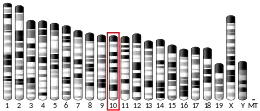| OSTM1 | |||||||||||||||||||||||||||||||||||||||||||||||||||
|---|---|---|---|---|---|---|---|---|---|---|---|---|---|---|---|---|---|---|---|---|---|---|---|---|---|---|---|---|---|---|---|---|---|---|---|---|---|---|---|---|---|---|---|---|---|---|---|---|---|---|---|
| Identifiers | |||||||||||||||||||||||||||||||||||||||||||||||||||
| Aliases | OSTM1, GIPN, GL, OPTB5, HSPC019, osteopetrosis associated transmembrane protein 1, osteoclastogenesis associated transmembrane protein 1 | ||||||||||||||||||||||||||||||||||||||||||||||||||
| External IDs | OMIM: 607649 MGI: 2655574 HomoloGene: 32203 GeneCards: OSTM1 | ||||||||||||||||||||||||||||||||||||||||||||||||||
| |||||||||||||||||||||||||||||||||||||||||||||||||||
| |||||||||||||||||||||||||||||||||||||||||||||||||||
| |||||||||||||||||||||||||||||||||||||||||||||||||||
| |||||||||||||||||||||||||||||||||||||||||||||||||||
| Wikidata | |||||||||||||||||||||||||||||||||||||||||||||||||||
| |||||||||||||||||||||||||||||||||||||||||||||||||||
| Osteopetrosis-associated transmembrane protein 1 precursor | |||||||||
|---|---|---|---|---|---|---|---|---|---|
| Identifiers | |||||||||
| Symbol | OSTMP1 | ||||||||
| Pfam | PF09777 | ||||||||
| InterPro | IPR019172 | ||||||||
| |||||||||
Osteopetrosis-associated transmembrane protein 1 is a protein that in humans is encoded by the OSTM1 gene.[5][6][7] It is required for osteoclast and melanocyte maturation and function.[5]
Function
This gene encodes a protein that may be involved in the degradation of G proteins via the ubiquitin-dependent proteasome pathway. The encoded protein binds to members of subfamily A of the regulator of the G-protein signaling (RGS) family through an N-terminal leucine-rich region. This protein also has a central RING finger-like domain and E3 ubiquitin ligase activity. This protein is highly conserved from flies to humans. Defects in this gene may cause the autosomal recessive, infantile malignant form of osteopetrosis.[7] This is also known as autosomal recessive Albers-Schonberg disease.[5][8]
The OSTM1 gene is regulated by the Microphthalmia-associated transcription factor.[9][10]
Interactions
References
- 1 2 3 GRCh38: Ensembl release 89: ENSG00000081087 - Ensembl, May 2017
- 1 2 3 GRCm38: Ensembl release 89: ENSMUSG00000038280 - Ensembl, May 2017
- ↑ "Human PubMed Reference:". National Center for Biotechnology Information, U.S. National Library of Medicine.
- ↑ "Mouse PubMed Reference:". National Center for Biotechnology Information, U.S. National Library of Medicine.
- 1 2 3 Chalhoub N, Benachenhou N, Rajapurohitam V, Pata M, Ferron M, Frattini A, Villa A, Vacher J (Apr 2003). "Grey-lethal mutation induces severe malignant autosomal recessive osteopetrosis in mouse and human". Nat Med. 9 (4): 399–406. doi:10.1038/nm842. PMID 12627228. S2CID 13113716.
- ↑ Abrahams BS, Mak GM, Berry ML, Palmquist DL, Saionz JR, Tay A, Tan YH, Brenner S, Simpson EM, Venkatesh B (Jun 2002). "Novel vertebrate genes and putative regulatory elements identified at kidney disease and NR2E1/fierce loci". Genomics. 80 (1): 45–53. doi:10.1006/geno.2002.6795. PMID 12079282.
- 1 2 "Entrez Gene: OSTM1 osteopetrosis associated transmembrane protein 1".
- ↑ Pangrazio A, Poliani PL, Megarbane A, Lefranc G, Lanino E, Di Rocco M, Rucci F, Lucchini F, Ravanini M, Facchetti F, Abinun M, Vezzoni P, Villa A, Frattini A (July 2006). "Mutations in OSTM1 (grey lethal) define a particularly severe form of autosomal recessive osteopetrosis with neural involvement". J. Bone Miner. Res. 21 (7): 1098–105. doi:10.1359/jbmr.060403. PMID 16813530. S2CID 29269032.
- ↑ Meadows NA, Sharma SM, Faulkner GJ, Ostrowski MC, Hume DA, Cassady AI (2007). "The expression of Clcn7 and Ostm1 in osteoclasts is coregulated by microphthalmia transcription factor". J. Biol. Chem. 282 (3): 1891–904. doi:10.1074/jbc.M608572200. PMID 17105730.
- ↑ Hoek KS, Schlegel NC, Eichhoff OM, Widmer DS, Praetorius C, Einarsson SO, Valgeirsdottir S, Bergsteinsdottir K, Schepsky A, Dummer R, Steingrimsson E (2008). "Novel MITF targets identified using a two-step DNA microarray strategy". Pigment Cell Melanoma Res. 21 (6): 665–76. doi:10.1111/j.1755-148X.2008.00505.x. PMID 19067971. S2CID 24698373.
- ↑ Fischer T, De Vries L, Meerloo T, Farquhar MG (Jul 2003). "Promotion of Gαi3 subunit down-regulation by GIPN, a putative E3 ubiquitin ligase that interacts with RGS-GAIP". Proc. Natl. Acad. Sci. U.S.A. 100 (14): 8270–5. Bibcode:2003PNAS..100.8270F. doi:10.1073/pnas.1432965100. PMC 166218. PMID 12826607.
Further reading
- Zhang QH, Ye M, Wu XY, Ren SX, Zhao M, Zhao CJ, Fu G, Shen Y, Fan HY, Lu G, Zhong M, Xu XR, Han ZG, Zhang JW, Tao J, Huang QH, Zhou J, Hu GX, Gu J, Chen SJ, Chen Z (2001). "Cloning and Functional Analysis of cDNAs with Open Reading Frames for 300 Previously Undefined Genes Expressed in CD34+ Hematopoietic Stem/Progenitor Cells". Genome Res. 10 (10): 1546–60. doi:10.1101/gr.140200. PMC 310934. PMID 11042152.
- Fischer T, De Vries L, Meerloo T, Farquhar MG (2003). "Promotion of Gαi3 subunit down-regulation by GIPN, a putative E3 ubiquitin ligase that interacts with RGS-GAIP". Proc. Natl. Acad. Sci. U.S.A. 100 (14): 8270–5. Bibcode:2003PNAS..100.8270F. doi:10.1073/pnas.1432965100. PMC 166218. PMID 12826607.
- Ramírez A, Faupel J, Goebel I, Stiller A, Beyer S, Stöckle C, Hasan C, Bode U, Kornak U, Kubisch C (2004). "Identification of a novel mutation in the coding region of the grey-lethal gene OSTM1 in human malignant infantile osteopetrosis". Hum. Mutat. 23 (5): 471–6. doi:10.1002/humu.20028. PMID 15108279. S2CID 20404483.
- Quarello P, Forni M, Barberis L, Defilippi C, Campagnoli MF, Silvestro L, Frattini A, Chalhoub N, Vacher J, Ramenghi U (2004). "Severe malignant osteopetrosis caused by a GL gene mutation". J. Bone Miner. Res. 19 (7): 1194–9. doi:10.1359/JBMR.040407. PMID 15177004. S2CID 21395998.
- Otsuki T, Ota T, Nishikawa T, Hayashi K, Suzuki Y, Yamamoto J, Wakamatsu A, Kimura K, Sakamoto K, Hatano N, Kawai Y, Ishii S, Saito K, Kojima S, Sugiyama T, Ono T, Okano K, Yoshikawa Y, Aotsuka S, Sasaki N, Hattori A, Okumura K, Nagai K, Sugano S, Isogai T (2007). "Signal sequence and keyword trap in silico for selection of full-length human cDNAs encoding secretion or membrane proteins from oligo-capped cDNA libraries". DNA Res. 12 (2): 117–26. doi:10.1093/dnares/12.2.117. PMID 16303743.




